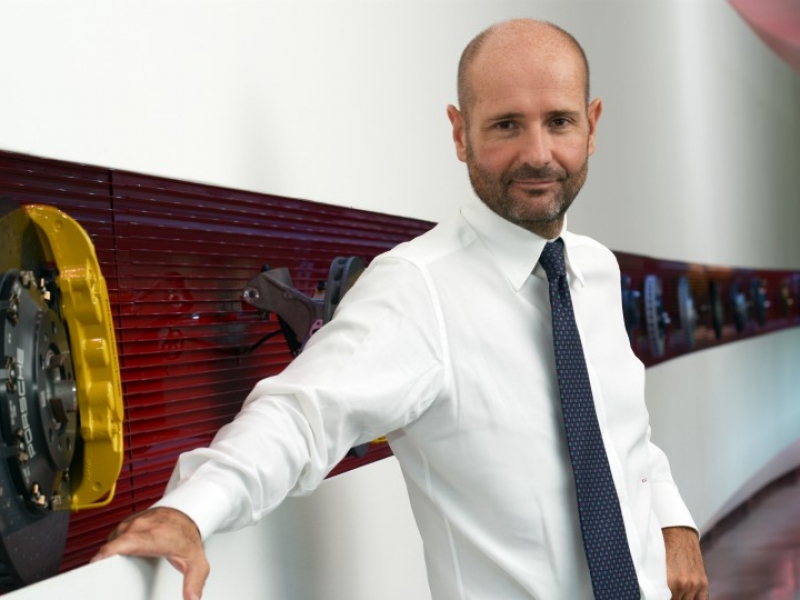
Few suppliers have been able to constantly grow their business like Brembo. In the first half of 2018, the Italian brake specialist posted revenue of 1.34 billion euros ($1.5 billion), up 6.1 percent from the same period in 2017, and increased net profit 2.5 percent to 140 million euros ($160 million). The car business accounts for a bit less than three-quarters of that revenue; the remaining 30 percent is split more or less evenly among motorcycles, racing and aftermarket/commercial vehicles. Although one of the leaders in its field, Brembo is still relatively small compared with giants such as Robert Bosch or Continental. Brembo Executive Deputy Chairman Matteo Tiraboschi explained why this can be an advantage. He also knows, however, that Brembo needs to grow, he told Automotive News Europe Associate Publisher and Editor Luca Ciferri and Correspondent Andrea Malan.
Which companies are Brembo’s biggest competitors?
We are one of the few complete braking system suppliers in the world. As far as discs are concerned, we have mainly local competitors. Nobody operates worldwide as we do. In calipers, we face all global players. They are a very important resource for us because they do not let us rest on our laurels while they are at our customers’ doors. Some of these competitors, such as Continental and TRW, do not only offer brakes. Sometimes they target our customers as a marketing prize, and they are ready to offer brakes at very low prices to gain access to other kinds of business. We then have to show the customer we really offer something different.
Brembo is a hyperspecialized company often fighting, as you said, against multidivisional giants. Do you feel at a disadvantage?
Of course, their diversified offer is an advantage. But as the smaller company, we are quicker and more focused.
Does Brembo need to grow?
We have to grow. Globally, we are small. We would have to double our sales to 5 billion euros per year.
Family-owned companies such as Brembo are known to think longer term. How far into the future does Brembo look?
We have a structured three-year plan that projects results up to five years. Beyond five years, we have guidelines. But it’s difficult to get into too much detail, not least because our customers have a hard time forecasting their business over that time frame.
Europe still accounts for more than half of your revenue. Is it too much?
That is because most premium carmakers we supply are in Europe. There is no need to rebalance. If we look at the end markets for the cars we supply, sales are quite evenly split between America, Europe and Asia.
How much does your biggest customer account for?
We have a policy not to let any customer generate more than 10 percent of our revenue. We have a number of customers around that percentage, but nobody at 40 percent. That is key to keeping our independence and to avoid being tied to big car platforms. If you lose one of those big platforms, you risk a big drop in revenue. We are ready to leave something on the table to have fewer long-term worries and to be able to be more aggressive toward customers, if necessary.
Would it make sense for Brembo to diversify its product portfolio?
We bought [seat belt maker) Sabelt 10 years ago, but the [global financial] crisis canceled most of the growth possibilities, so we decided to focus on our core business. [Brembo sold Sabelt in 2015.] We also evaluated the aerospace world, but, given the kind of technological breakthroughs that are possible now, we must stay focused to avoid the risk of missing opportunities in our core business.
One of the biggest disruptors to the industry will be the electrification of the car. How will Brembo handle this difficult transition?
The brake is a key element of the passengers’ comfort. If the car is electrified, it will need an electric brake instead of the current hydraulic one. We will have to understand which cars will be electrified and up to which point the cars will be electrified. Generally speaking, cars will be heavier and need better-performing brakes. Imagine stopping in an emergency in a 3-ton SUV.
Be the first to comment